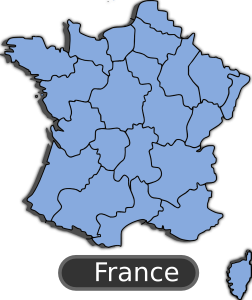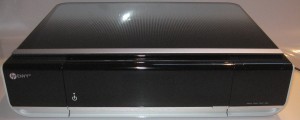Key Resources – French language
DegroupNews – France map
DegroupTest
Service Providers
Free.fr – Freebox, Alicebox
Orange (France Télécom) – Livebox
Bougyes Télécom – Bbox
SFR – Neufbox
Completel – DartyBox
Introduction
If you have bought or are thinking of buying that chic apartment or holiday home in France, you may also be considering setting up Internet service along with your phone service for that property. Here, it will become very difficult to choose the service that suits your needs because most, if not all, of these services are priced very keenly.
Competitive market
 Here, you are dealing with a highly-competitive communications-service market which supports local-loop unbundling or discrete infrastructure to your premises for the Internet services. This applies both to copper-based ADSL services and fibre-optic next-generation broadband services.
Here, you are dealing with a highly-competitive communications-service market which supports local-loop unbundling or discrete infrastructure to your premises for the Internet services. This applies both to copper-based ADSL services and fibre-optic next-generation broadband services.
It is infact so much so that in most French cities and towns, being equipped with broadband “hot-and-cold running” Internet and unlimited-use landline telephony is considered a “given”.
ADSL technology
If a provider provides local-loop-unbundled access to phone lines in your service area, the area is described in French as a “zone dégroupé” for this provider. This allows the provider to provide the best service available that they can offer to you. It is because they simply have their ADSL equipment in your exchange, with an arrangement for direct access to your phone line’s wiring.
The DegroupNews site has an interactive map of France which allows you to know whether your desired provider provides this kind of access in your town and its sister site DegroupTest allows you to enter in your French location’s telephone number so you can know who can provide the unbundled access to your phone number.
Fibre-optic next-generation broadband
If you are able to have fibre-optic next-generation broadband, this will also come mostly as fibre-to-the-premises but in a competition-enhanced format. Here, you will have a “monofibre” setup with one fibre-optic line from the street to your premises and fibre-optic switches would be used to select which fibre-optic next-generation provider would provide the broadband to your home.
On the other hand, you may have a “multifibre” with fibre-optic lines from each competing infrastructure provider fed to a special multi-input wall socket in your premises. Here, an installer would select the connection that pertains to the service you subscribe to by modifying this wall socket.
Rural broadband Internet
Most rural areas of France will have ADSL Internet provided for by Orange (France Télécom) at least, but there is still work needed to be done with some sparse country areas not having the ability to support the full offering, especially the TV part of the triple-play service. There is action taking place in some parts of France like Brittany that is being brought about by local and regional governments, with some assistance from Paris as well as business assistance.
It may be worth checking with local government, local chambers of commerce, Orange and local businesses; as well as consulting DegroupNews to find out what is going on for Internet at that “mas en Provence”; mountain home in the Pyrenees, Alps or Massif Centrale; or other country dwelling.
Of course, there is a strong likelihood that the main resort areas lke the Pyrenean and Alpine ski resorts and the main seaside resorts on the French Riviera (Côte D’Azur) like Saint Tropez will be dégroupé (fully unbundled) by the popular operators like Free or SFR.
Triple-play service
Most of these Internet service providers offer a “triple-play” service with broadband Internet, regular landline telephony and multichannel pay TV as a single package. This setup is specifically in the form of a single-pipe triple-play service with all services carried over the one copper or fibre-optic link between your premises and their exchange setup.
Services
Typically, you put down at least 25-30 euros per month for at least 20Mbps ADSL broadband, more TV channels to choose from, and calling anywhere in France at least as part of this cost.
A fully-equipped service with all of the channels on the TV, fibre-optic broadband and inclusive telephone calling to landlines and mobiles in the most-often-called countries in the world would set you back by approximately 40 euros per month.
There are even times when you can’t really call an accurate benchmark price and service mix for telephone and Internet service there because these prices can be keenly honed or services quickly varied for value. This is an example of how keen this competitive communications environment is in France.
The hardware
You would be provided with what is referred to as a “box” which is an Internet gateway device which also houses a VoIP analogue-telephony-adaptor as well as a “décodeur” which is an IPTV / digital-broadcast-TV set-top box. Mostly, these devices would be connected to each other via a HomePlug AV link, known in French as “réseau CPL”.
These Internet gateway devices are typically known as “Livebox”, “Freebox”, “Bbox”, “Neufbox” or some similar marketing name which also applies to the triple-play service you subscribe to and I refer to these services and routers in this article and across HomeNetworking01.info as an “n-box” because of the naming convention used by the carriers.
Increasing you are dealing with carrier-provided home network hardware that is above the ordinary when it comes to anything a telco or ISP would provide as standard for their customers. I would expect the latest incarnations of these devices to be a well-bred 802.11g/n Wi-Fi router with four Ethernet ports and UPnP Internet Gateway Device functionality.
Increasingly, these Internet gateway devices also are capable of being a network-attached storage device when you connect a USB hard disk to them or, in some cases, through the use of an integrated hard disk. If they have this function, they will typically work as an CIFS-compliant network file share as well as a media server for a particular media directory using iTunes (DAAP) or DLNA standards.
Similarly, the set-top boxes would be capable of being DLNA network media clients as well as increasingly becoming personal video recorders. Of course, this hardware is regularly and frequently updated with firmware that adds on extra functionality.
The Freebox Révolution – the best example of these “n-boxes”
One of these devices that I have given a fair bit of airtime to is the Freebox Révolution. Here, I wrote an article on this site about this piece of stunning industrial design which has an integrated Blu-Ray player in its décodeur (set-top box) and works tightly with the Apple ecosystem. For that matter, if you head for this option, you may be in a position to forego the need for a DVD player to go with the flat-screen TV that you intend to hook the Freebox Player to.
Choosing the right triple-play setup for that French property.
Who is it “dégroupé” to?
If you are coming in to France and have bought that “appartément en Paris” or “mas en Provence”, use the map in the DegroupNews website to identify who is covering your area in an unbundled or “dégroupée” state at the moment. You may also have to use the DegroupTest resource if you know your property’s current phone number or the phone number of one or two of your neighbours if you haven’t got phone service on in your location.
The right offers
Then, once you know who has the service under the “dégroupée” conditions, head to the service provider’s Web page and look at what they have to offer. For the telephony packages that come with any of these services, make sure that you have chosen the plan that allows you to make calls to your home country or frequently-called destinations “illimité” i.e. for no extra cost.
As for Internet use, choose the bandwidth that suits your needs, including allowing for use of the IPTV and interactive entertainment services that will be available through your “décodeur” set-top box. These services aren’t metered so there isn’t any worry about a broadband download limit or how much bandwidth you have used.
You also check that you have the TV channel packages that meet your needs, although most of these channels will be available with the shows running in native language audio with French-language subtitles (version originale sous-titres).
Getting the most out of your “n-box”
Firmware updates
All of the “n-boxes” and their corresponding “décodeurs” do undergo frequent and regular firmware updates, most often to accommodate new services and supply new functionality as well as to keep a stable operating environment. Some of them may perform a “blind” update or you perform the update manually by heading to the management Web page (page de gestion) or the Setup Menu and looking for the “mis à jour” or “mettre à jour” option.
Using an UPS to provide telephone-service continuity
A good practice would be to purchase a low-capacity uninterruptable power supply and connect the Livebox, Freebox or similar Internet gateway to that device if you don’t want to lose phone service during a power cut. Here, you may have to purchase a separate “homeplug” for those devices like the Freebox Révolution that use a power supply and “homeplug” module as their power supply and connectivity to the TV.
The best example of these UPS devices that would suit the “n-box” would be the APC ES series UPS units which are like a large thick power strip. Here, you would need to purchase these units in France so that you have the correct French power sockets on the unit and it comes with a proper Continental power plug.
Exploiting the n-box’s integrated NAS functionality
If the “n-box” has NAS functionality, whether with an integrated hard disk or a USB external hard disk that you supply yourself, it is a good idea to exploit this function. Here, you can use the storage capacity as a drop-off point for files that you move or copy between computers via the home network. Similarly, you could dump the latest pictures from your camera to a known directory on the NAS, share it via DLNA and view them using the set-top box or DLNA media app on your tablet.
Property owners who let others use their properties could place electronic copies of the reference material for that house on to the network storage. Then the people who are using these properties can download the material to their laptops or to their smartphones and tablets that are equipped with SMB-compliant file-manager apps.
The “n-box” may support this function with the aid of a USB external hard drive but may not provide enough power to run some of the small USB hard disks on the market. These drives typically have a separate USB connection for power, so you could then plug this USB power connection in to a self-powered USB hub or an AC-USB power supply, which you could pick up from Darty, Carrefour or other similar stores.
But I would still use a regular NAS for applications where the security of your data is concerned such as computer-system backup. This means that you are able to keep your data if you shift between carriers, the “n-box” plays up and the carrier has to replace it, or you move out of your French abode. As well, the regular NAS can handle intense data-sharing applications more readily than the “n-box” as a NAS.
Key terms and words to remember
| Dégroupé(e) |
A condition of direct unbundled local-loop access to your phone line by your carrier |
| Monofibre |
Single fibre run to your premises with access to competing fibre carriers |
| Multifibre |
Multiple fibre runs to your premises with each owned by a competing finre carrier. Selected using a special wall socket |
| Box (n-box) |
Carrier-provided Internet gateway device (router) with at least a VoIP analogue-telephony adaptor and/or DECT base station |
| Décodeur |
Carrier-provided TV set-top box that connects to the Internet gateway device |
| CPL |
HomePlug powerline network |
| page / interface de gestion |
Web management page for the “n-box” |
| mettre à jour (mis à jour) |
update (often used in relation to these devices’ firmware) |
Conclusion
This guide will help you with planning for and setting up an Internet service for that property that you have or are dreaming to have in France.



